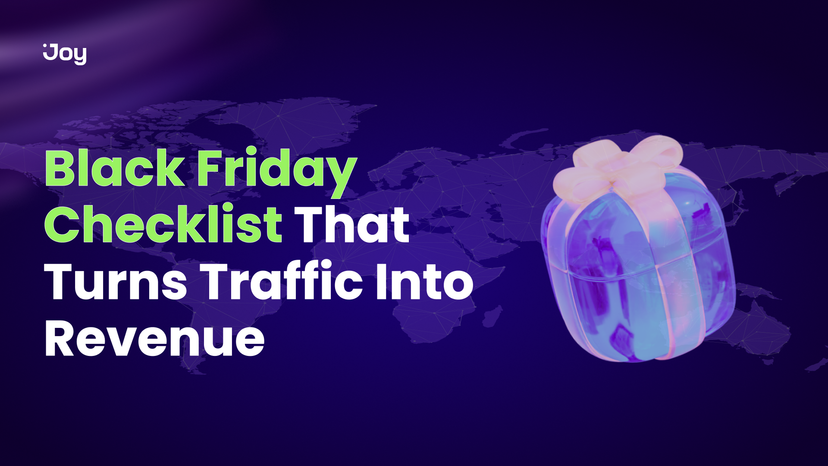Point-based loyalty programs are everywhere on a daily basis. Coffee shops, airlines, credit cards – everyone’s got one. And it’s not just businesses that benefit – 58% of consumers in the US say they’re the best part of a loyalty program.
As a merchant, it’s pretty easy to set up a loyalty program, but the real challenge is defining the value of your program’s loyalty points so you can have a greater balance of cost and profit.
But don’t worry, this guide will show you exactly how to calculate their real-world value. We’ll break down the formulas, compare different industries, and reveal strategies to help you nail it!
Let’s get started!
What Are Loyalty Points?
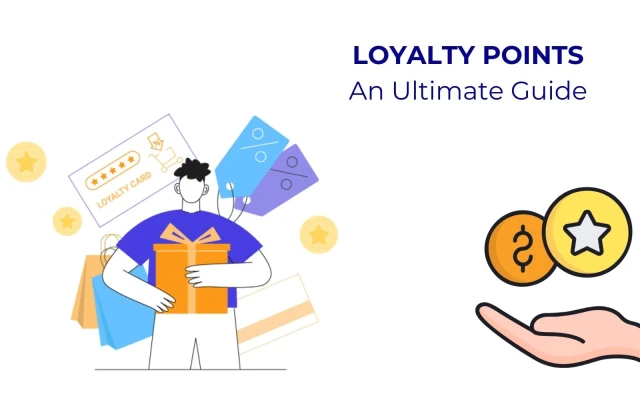
Loyalty points are a kind of “currency” that customers earn through a business’s loyalty program. They are designed to incentivize customers to repeat purchases and engage with a brand.
Loyalty points create a win-win situation: customers receive benefits for their continued purchases, while businesses build long-term relationships and increase sales.
How Do Loyalty Points Work?
Loyalty points operate as a structured reward system where customers earn and redeem points based on their interactions with a brand.
There are 3 main stages:
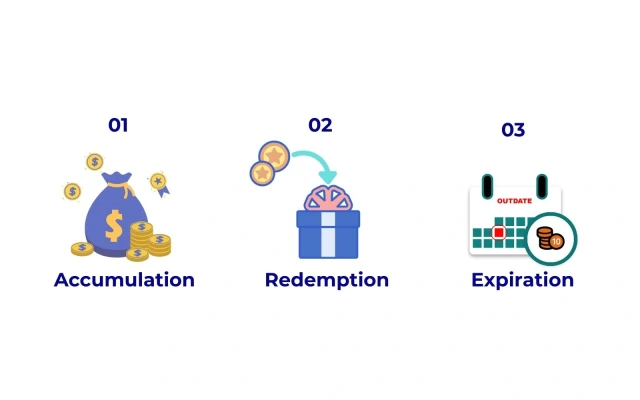
1. Accumulation:
Customers can accumulate loyalty points through various actions, such as:
- Purchases: Customers earn points for every dollar spent (e.g., $1 = 1 point).
- Sign-up: New customers receive bonus points when they create an account.
- Referrals: Customers earn points by referring friends who make a purchase.
- Social Media Engagement: Liking, sharing, or following a brand may grant points.
- Product Reviews & Feedback: Customers earn points for leaving reviews or completing surveys.
- Special Promotions & Events: Brands offer limited-time bonus points on special occasions (e.g., birthdays and holiday sales).
2. Redemption:
Once customers accumulate enough points, they can redeem them for valuable rewards. Businesses set redemption rules to ensure the balance between customer benefits and profitability.
Here are some common redemption methods
- Discounts: Points can be converted into discounts on future purchases (e.g., 500 points = $5 off).
- Free Products & Services: Customers can redeem points for specific products or services.
- Exclusive Access: Special sales, early product launches, or VIP events for high-tier members.
- Gift Cards: Points can be exchanged for store or third-party gift cards.
- Experiential Rewards: Travel perks, dining experiences, or event tickets.
- Donations & Charitable Giving: Some programs allow customers to donate points to charities.
Effective programs offer clear and accessible redemption processes. However, complexities or limited options can deter customers from redeeming their points, leading to frustration.
3. Expiration: Managing point validity and avoiding customer frustration
Loyalty points usually come with expiration rules to encourage usage and prevent financial liabilities for businesses. However, if not managed well, expired points can frustrate customers and reduce loyalty. It often has
- Time-based expiration: Points expire after a set period, such as annually.
- Inactivity-based expiration: Points expire after a period of account inactivity.
- No expiry: Some brands, especially premium ones, keep points active indefinitely as long as the account remains in good standing.
💡 For a deeper understanding, see our article Loyalty Points Program Explained
How to Calculate the Value of Loyalty Points Effectively
Before diving into the mechanics of point valuation, it’s important to grasp how the cost of rewards aligns with customer spending patterns. This alignment ensures that the loyalty program remains attractive to customers while being financially sustainable for the business.
- Cost of rewards: This refers to the actual expense incurred by the business to provide a reward. For instance, if a product retails at $50 but costs the company $30 to produce and deliver, the cost of the reward is $30.
- Customer spending behavior: Analyzing how much customers typically spend helps in setting realistic thresholds for earning and redeeming points through customer data such as average purchase values, purchase frequency, or customer lifetime value.
Example: If the average customer spends $100 per transaction, offering 1 point per dollar spent with a 500-point reward threshold encourages repeat purchases. - Perceived Value: The customer’s perception of point value is crucial. Even if a point has a low cost to you, it can be effective if customers perceive it as valuable. This is where marketing and how the program is presented to the customer are very important.
Moving to the main part, imagine your loyalty points as tiny pieces of currency. Determining the reward value of each loyalty point is a fundamental step in structuring your program.
1. Define the redemption value
At its core, a loyalty point functions as a form of currency within your business ecosystem. To ascertain its value, consider the following formula:
Point Value = Monetary Value of Reward / Number of Points Required
Example: If a $10 discount necessitates 1000 points, each point equates to $0.01, or 1 cent.
However, it’s essential to differentiate between the perceived value to customers and the actual cost to your business:
- Perceived value: The value customers associate with the reward. For example, if 1,000 points can be redeemed for a product priced at $50, the customer perceives each point as worth $0.05.
- Actual value: The expense your business incurs to provide the reward. If the $50 product costs the business $30 to produce, the actual cost per point is $0.03.
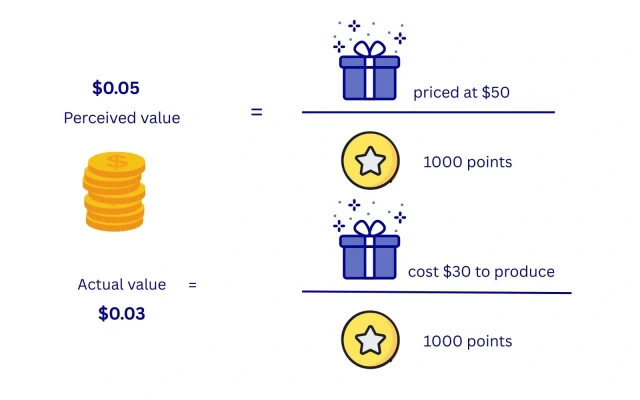
2. Determine the earning rate
The earning rate defines how many points a customer earns per dollar spent. This rate influences how quickly customers can accumulate points and reach redemption thresholds.
Example: If customers earn 5 points for every $1 spent, the earning rate is 5 points per dollar.
3. Calculate the Reward Percentage
The reward percentage reflects the portion of a customer’s spending that is returned to them as rewards. It’s calculated by:
Reward Percentage = Earning Rate × Redemption Value per Point
Example: With an earning rate of 5 points per dollar and a redemption value of $0.1 per point above: Reward percentage = 5*0.1 = 0.05 = 5%
Hence, for every $200 spent, you will get a $10 discount. Or else it means for every dollar spent, the customer effectively receives a 5% cash back.
Success Tip: Here’s a good rule of thumb for setting up your loyalty points:
- For regular products: Aim for a maximum of 5% back in points. A common and easily understood setup is 1 point = 1 cent. Customers generally accept this value.
- For high-value products: You can go up to 10% back, but make sure your program remains sustainable.
For each different reward type, there must be a specific and unique guide to setting up loyalty points.
- Percentage discounts: These rewards adjust based on the customer’s spending, making them flexible yet effective. To determine the right point cost, consider your Average Order Value (AOV).
Example: Suppose your AOV is $60, and you want to offer a 10% discount ($6 off). If your program follows a redemption value of 0.1 ($1 = 10 points), then a $6 reward would cost 60 points.
- Free product rewards: Offering free products can encourage repeat purchases while helping you manage inventory, whether by clearing stock or promoting new items.
- Calculate the cost-to-business price of the product (not the retail price).
- Apply a markup for sustainability.
Example: If a product costs $10 to your business and points convert at $1 = 10 points, then a fair redemption rate might be 150–200 points to ensure profitability.
- Free shipping rewards: Shipping incentives are a high-value reward, especially if your store charges shipping fees. To set points accurately:
- If your average shipping cost is $8 and your loyalty point system is $1 = 10 points, then free shipping should be valued at 80 points.
- Consider regional variations—for international orders, set a higher point threshold to prevent losses.
- To manage profitability, offer free shipping only above a specific order value, e.g., “Free shipping for orders over $50 with 800 points.”
- Bonus point earning actions: Beyond purchases, awarding points for engagement can encourage customers to stay active in your ecosystem. Here’s how to structure points effectively with a redemption value of 0.01:
- Sign-up bonus → 100 points (Encourages new user registration)
- Product review → 50 points (Drives social proof and trust)
- Social media follow → 20 points per platform (Expands brand reach)
- Referral program → 200 points per successful referral (Acquires new customers at a lower cost)
Strategies To Set Point Values For Your Loyalty Rewards
After all, to maintain a rewarding yet profitable loyalty program, consider the following guidelines to get the optimal results:
1. Align with brand values
A loyalty program that reflects your brand’s core values fosters deeper connections with customers. By integrating meaningful initiatives, you not only reward purchases but also promote shared beliefs and commitments.
Example: Patagonia’s Worn Wear program
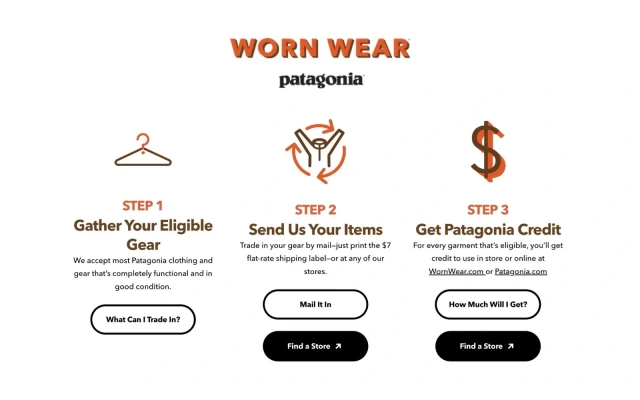
Patagonia, a clothing brand renowned for its commitment to environmental sustainability, launched the Worn Wear program to encourage customers to trade in their used Patagonia gear. Participants can receive up to 25% of the MSRP (the manufacturer’s suggested retail price) in credit to use in-store or online at Patagonia or Worn Wear, promoting recycling and reducing waste.
This initiative not only aligns with Patagonia’s eco-friendly ethos but also incentivizes customers to engage in sustainable practices.
2. Use tiered redemption to encourage more spending
A tiered redemption system incentivizes customers to save more points for better rewards, increasing their overall spending. Instead of a linear redemption model, offering higher-value rewards at slightly discounted rates encourages customers to accumulate more points before redeeming.
Example of a Tiered Redemption System:
- 500 points = $5 discount (1 point = $0.01)
- 1,400 points = $15 discount (1 point = $0.0107, slightly more value)
- 2,500 points = $30 discount (1 point = $0.012, the best value per point)
3. Factor in redemption frequency and expiry dates
A loyalty program isn’t just about earning points—it’s about spending them too. If customers hoard points without redeeming them, engagement declines and your program loses its appeal.
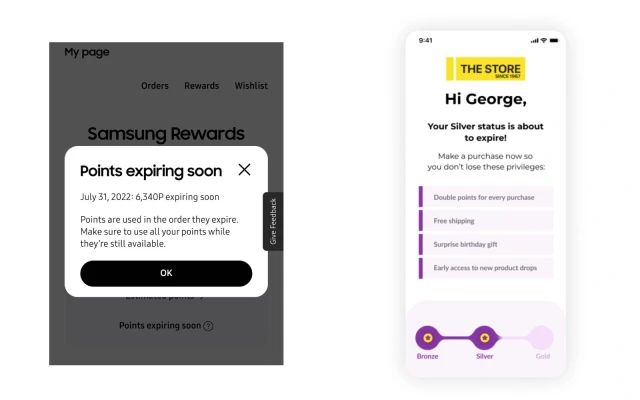
Worse, unredeemed points become a liability for your business. That’s why strategic redemption incentives are key to keeping your program active and profitable.
- Set expiry dates to drive urgency: Creating a 12–24 month expiration window prevents customers from endlessly stockpiling points and encourages frequent redemptions. When customers see a deadline approaching, they’re more likely to act quickly, leading to more transactions.
Example: Send automated reminders (email, SMS, app notifications) when points are close to expiring. “You have 500 points expiring in 30 days—redeem them now for exclusive discounts! - Reward special occasions with bonus points: A loyalty program should feel personal and rewarding. Offering extra points on birthdays, anniversaries, and holidays encourages the customer’s exclusivity and their repeat spending.
Example: On a customer’s birthday, they receive: (1) 250 bonus points as a gift; (2) a limited-time double-point offer for their next purchase. This makes the customer feel valued and motivates them to make a purchase sooner rather than later.
4. Learn from your competitors:
It’s always a good idea to identify key competitors and their loyalty programs. You should examine their point-earning ratios, redemption values, and reward structures thoroughly, and note down any industry standards or common practices.
- Match and Compete Strategy: If competitors have well-established programs, matching their basic point values can prevent customers from feeling disadvantaged.
- Differentiate and Attract Strategy: If you have strong customer insights, you can deliberately deviate from competitor norms by offering higher point values, more valuable rewards, or a unique redemption system.
5. Take a customer-centric approach
If you launch your loyalty program with a standard points value based on the calculation we discussed, but you notice your customers aren’t engaging with it much. A smart next step would be to collect feedback from them to pinpoint any issues with the value system.
Based on customers' comments, you can tweak the point value to make the program more appealing and keep them coming back.
How Do Famous Brands Calculate Their Loyalty Points Value: 2 Real-World Examples
Are you curious about how the top brands calculate the loyalty points to get such success? Let’s delve into two renowned programs: American Airlines’ AAdvantage® and Marriott Bonvoy.
American Airlines – AAdvantage® Loyalty Point Rewards
American Airlines, one of the world’s largest airlines, has operated the AAdvantage® loyalty program since 1981. Designed to enhance customer loyalty, the program encourages travelers to choose American Airlines over competitors for long-term rewards.
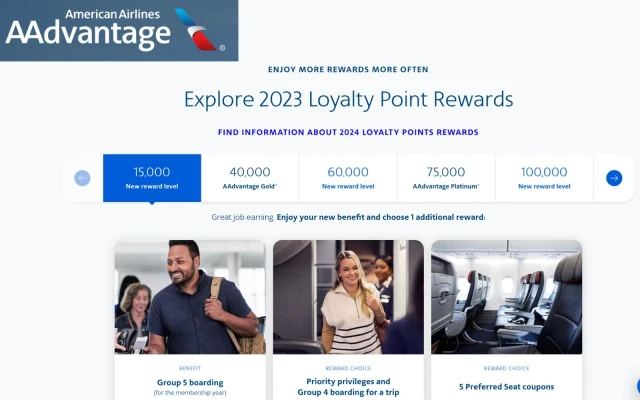
Earning points
Members accumulate miles based on the distance flown and the fare class purchased. Additionally, partnerships with various credit cards, hotels, car rental agencies, and retailers provide alternative avenues to earn miles.
Points value and redemption
The value of AAdvantage® miles varies depending on the redemption choice. On average, miles are worth approximately 1.4 to 1.8 cents each when redeemed for flights.
For example, a round-trip domestic flight costing $300 might require about 20,000 miles, equating to 1.5 cents per mile. Redemption rates can fluctuate based on factors like demand, route, and booking time.
Elite status and benefits
Accumulating loyalty points not only enables members to redeem miles for flights but also to achieve elite status tiers, unlocking additional benefits:
- AAdvantage Gold®: Requires 40,000 loyalty points. Benefits include a 40% mileage bonus on eligible flights and priority boarding.
- AAdvantage Platinum®: Requires 75,000 loyalty points. Benefits include a 60% mileage bonus and complimentary upgrades.
- AAdvantage Executive Platinum®: Requires 200,000 loyalty points. Benefits include a 120% mileage bonus and the highest upgrade priority.
These tiers incentivize members to accrue more points to access enhanced travel experiences.
As of 2023, the AAdvantage® program boasts approximately 115 million members, and American Airlines reported $6.53 billion in revenue from its loyalty program, marking a 13% increase from the previous year.
Marriott Bonvoy
Marriott Bonvoy, Marriott International’s luxury loyalty program, is widely recognized as a leading global rewards program in the hotel industry. Covering over 8,000 hotels across 139 countries, Marriott Bonvoy attracts frequent travelers seeking premium hospitality benefits.
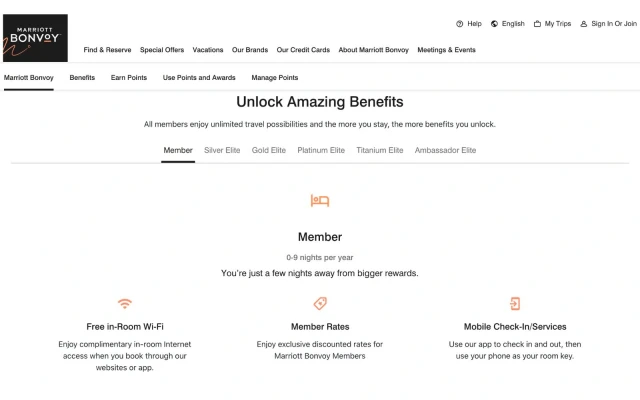
Earning points
Points are earned by stays, purchases with co-branded credit cards, and through partnerships, redeemable for hotel stays, experiences, events, and more.
The exchange value is 10 points per dollar spent at most Marriott properties. Stays at extended-stay brands like Residence Inn and TownePlace Suites earn 5 points per dollar.
Points value and redemption
Marriott Bonvoy points typically hold a value ranging from 0.7 to 1 cent per point, depending on the redemption option. For instance, a hotel room costing $200 per night might require 25,000 points, valued at 0.8 cents per point. The program offers a “PointSavers” option, allowing members to book select hotels at reduced point rates, enhancing point value.
Elite benefits
As a Marriott Bonvoy participant, you will be able to access 5 elite status levels with amazing escalating benefits
- Silver Elite: Achieved after 10 qualifying nights. Benefits include 10% bonus points on stays and priority late checkout.
- Gold Elite: Achieved after 25 qualifying nights. Benefits include 25% bonus points and room upgrades.
- Platinum Elite: Achieved after 50 qualifying nights. Benefits include 50% bonus points, lounge access, and annual choice benefits.
- Titanium Elite: Achieved after 75 qualifying nights. Benefits include 75% bonus points and additional perks.
- Ambassador Elite: Achieved after 100 qualifying nights and $20,000 in annual spending. Benefits include 75% bonus points and personalized service
For such a strategic loyalty program, Marriott Bonvoy’s membership reached nearly 228 million by the end of 2024, underscoring its position as a leading hotel loyalty program.
Bottom Line
Loyalty points aren’t just numbers—they represent experiences, savings, and deeper connections between brands and customers. Understanding point-based loyalty program words and correctly calculating loyalty points’ value is key to designing a program that benefits both your business and your customers.
But remember, in the end, loyalty isn’t about collecting points; it’s about making them count!
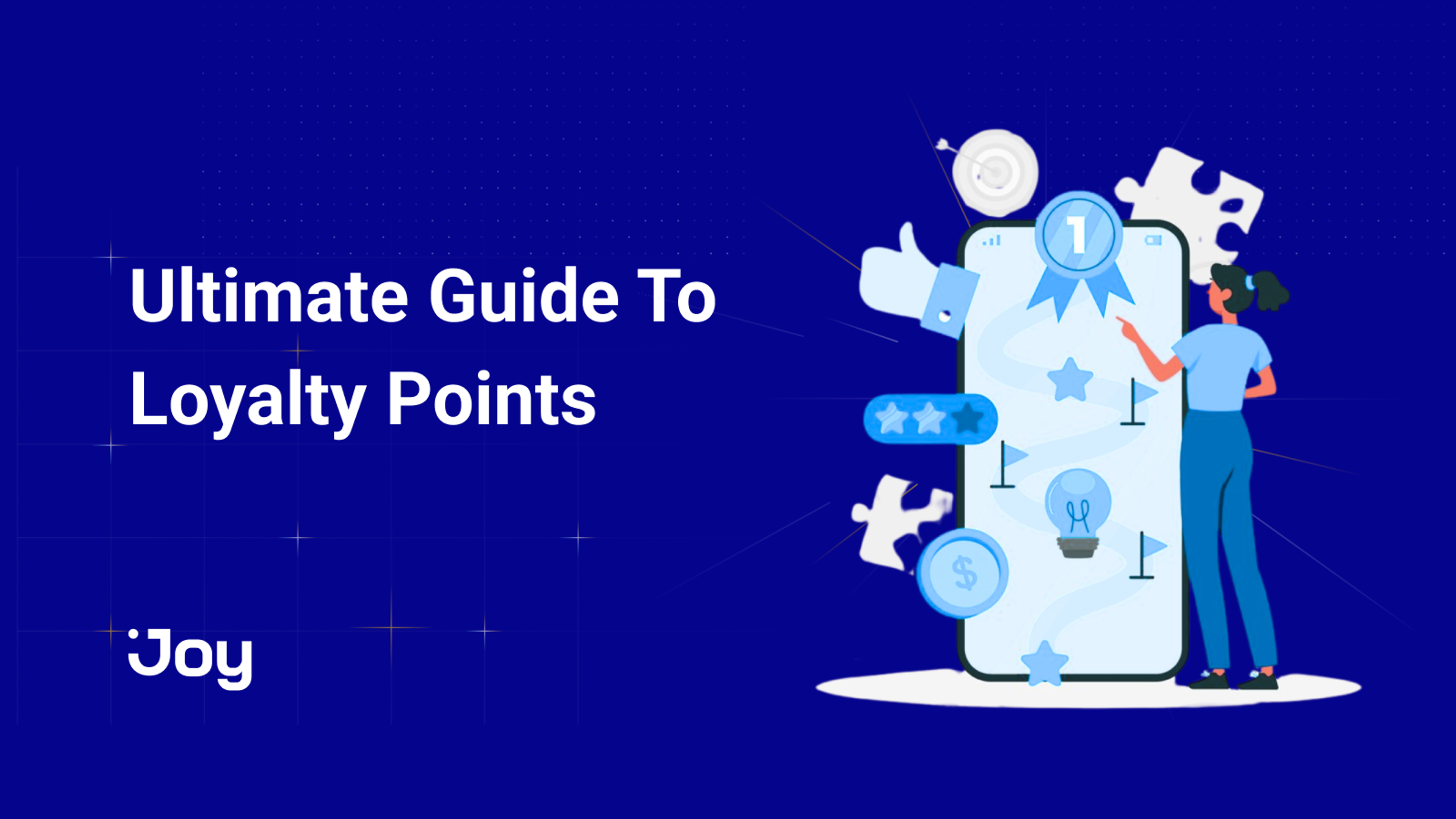


-a7e9a3.png?width=828&q=75&f=webp&auto=format)
